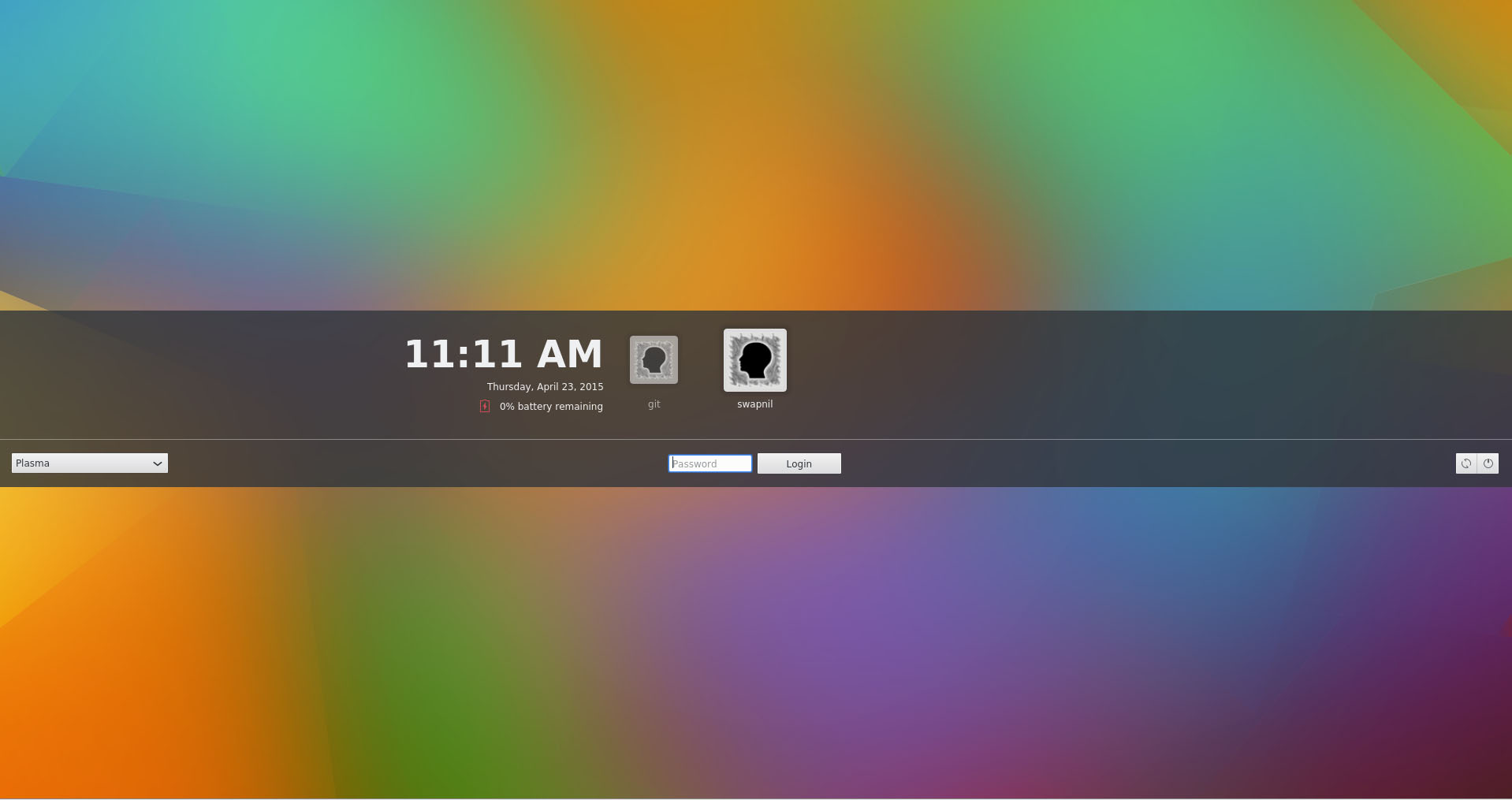
The latest version of Kubuntu, 15.04, aka Vivid Vervet was released last week and it’s available for free download. With this release it has become the first major distro to ship Plasma 5 as the default desktop environment.
There are chances that some users may still have bad memories of Kubuntu. It’s true. Back in 2011 when Ubuntu made a switch to Unity, I started looking for alternatives as their desktop environment was not suited for me. I started trying KDE-based distros and Kubuntu was among the top choices. However my experience with the distro was mixed. It was buggy, bloated and GTK apps would look ugly in it. That’s when I found openSUSE and settled down with it.
This Kubuntu is different
Fast forward to 2014 and Kubuntu turned out to be a totally different OS. I have been running it on one of my production systems since 14.04. It’s extremely stable, polished and offers a great experience.
I don’t know the secret behind this surprising improvement in the distro. I think ever since the KDE community split the KDE software into the three components and Kubuntu started recieving funded by Blue Systems the distro is getting better with each release.
I asked Jonathan Riddell, the lead developer of Kubuntu, what contributed to this improvement. Displaying the typical KDE spirit, he attributed everything to the community.
Riddell said, “I think the main factor is the awesome KDE team giving us such great software. At Kubuntu we’re embedded in the KDE community so we like to think we give the best KDE experience and we always look to improve KDE upstream than make changes in the distro. I’m really pleased Kubuntu will be the first major distro with Plasma 5 and the feedback so far has been incredible. With any luck today’s announcement will see more uptake in the original and best Linux desktop project.”
The reason I started using Kubuntu on one of my systems is simple: it brings the best of two worlds together. While Ubuntu provides it with a very dynamic and stable foundation, KDE gives it one of the most advanced desktop environments. KDE’s Plasma desktop is known for being extremely feature rich, which enables a Kubuntu user to exploit the full potential of the computer while keeping things simple.
Let’s see what’s new in Kubuntu 15.04.
The first distro to ship Plasma 5
The latest release of Kubuntu is further improving that experience thanks to the work being done on Plasma 5. With this release Plasma 5 has become the default DE of Kubuntu, opening doors for the graceful exit of KDE Plasma 4 after serving us well for over 7 years, which makes Kubuntu the first major distro to ship Plasma 5 as the default desktop environment.
Kubuntu comes with Plasma 5.2 whereas the KDE community just released the beta of Plasma 5.3. Plasma users know that the DE is under heavy development. Developers are busy porting their packages to Frameworks 5 and newer Qt technologies. As a result with each version developers are adding new features or bringing back the old ones. Since I have been keeping up with the latest version of Plasma (even if it is beta) I wasted no time and installed it on my Kubuntu 15.04. So in this review I will essentially talk about Plasma 5.3 and not Plasma 5.2. Sorry!
Systemd is here
One of the biggest changes for Kubuntu users is the arrival of systemd. And it’s going to stay. Nothing could have been better. As an Arch Linux and openSUSE user I have been using systemd from the early days. I am quite used to it and preferred it over Upstart. I would often make a mistake and try to run systemctl on my Kubuntu box, only to be told by the grumpy Konsole that the command didn’t exist. Now all my systems use the same init system.
Goodbye KDM: Hello Simple Desktop Display Manager
Say goodbye to KDM, the default display manager of KDE. Plasma 5 now uses Simple Desktop Display Manager (SDDM) instead of KDM and as a result, Kubuntu is also switching to SDDM from KDM. I have been using SDDM on my Arch system from the time before Plasma 5 came along. I liked it because it can be heavily customized. You can personalize your computer right from the login screen. It complements Plasma which is known for being the most customizable desktop environment.
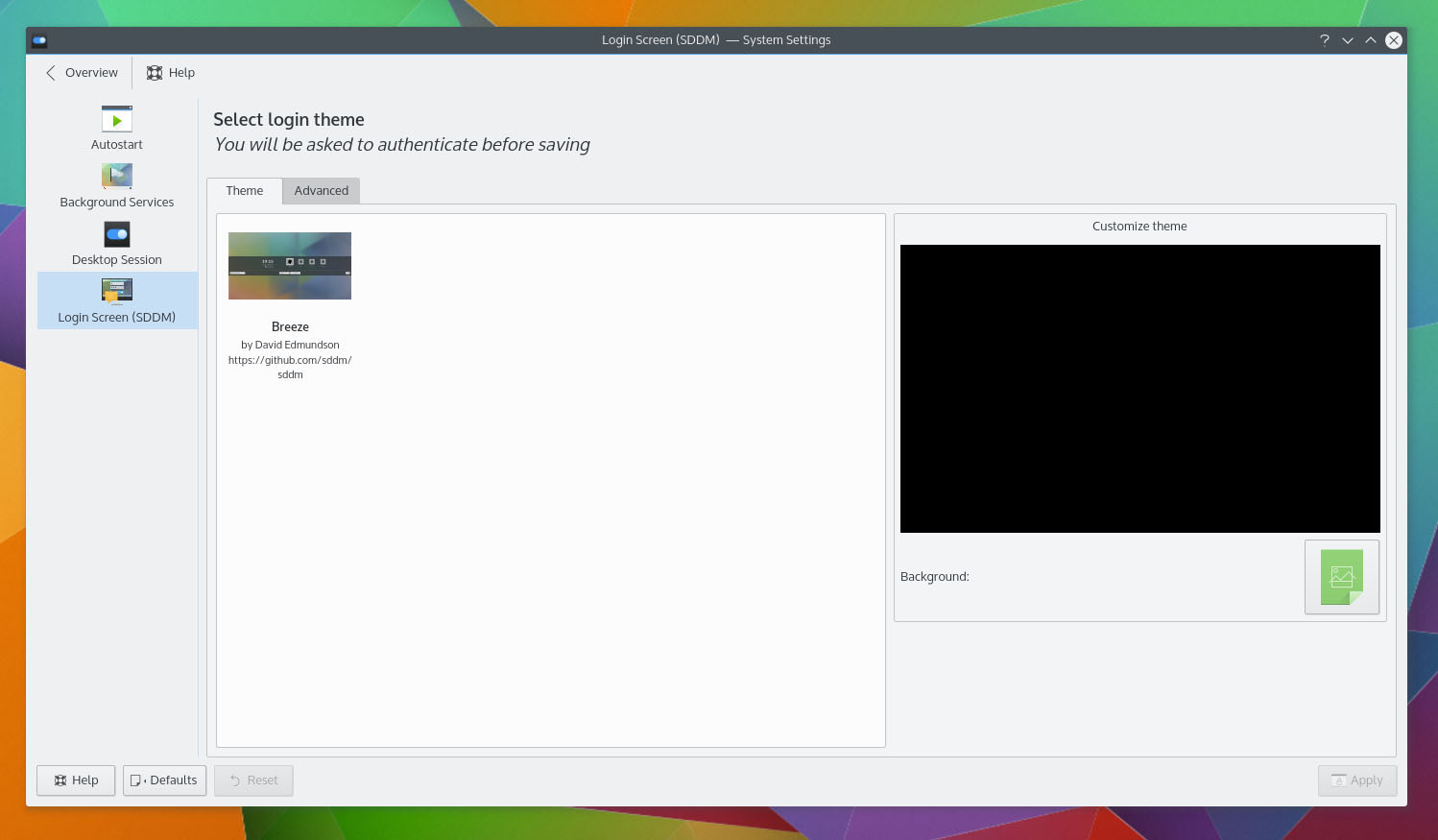
While these two changes in Kubuntu have made my life easier, it might have been a totally different experience for Kubuntu developers. When I asked about the switch to systemd and SDDM, Riddell said, “Kubuntu of course is just a flavor of Ubuntu and there are other teams in Ubuntu who worry about the foundations like systemd. The transition has been mostly smooth for us although some integration of SDDM has been tricky and we still have an occasional bug where the livecd will send you to SDDM rather than just logging in for some hardware, so not perfect. But it’s nice to be using the same system as other distros and to know that it can be used in userspace as needed.”
The switch to systemd is trickier than SDDM because it also means a new set of commands for maintaining and managing your systems. Both Upstart and systemd use different commands to execute a task, so my obvious question for Riddell was if they were working on any documentation to assist users, especially the enterprise customers, when they encounter systemd instead of Upstart.
Riddell said,”I’m sure there’s lots of documentation out there for those who need it, the Kubuntu documentation usually focuses on home users. As Plasma releases dude, I have recently nudged a new contributor to bring in a Systemd KDE Control Module so I hope to see a nice GUI for administration in future releases of Plasma.”
What’s in the box
Kubuntu comes with a decent stack of applications pre-installed so a user can start working as soon as the installation is finished. In addition to the core KDE applications such as Kate, KWrite, Konsole, Gwenview, Kmail, K3B, Amarok, Dragon Movie Player, etc. Some of these applications, such as Gwenview or Konsole, are using the Frameworks 5, whereas many others like K3B are still based on 4.x series. Kubuntu is not a pure ‘KDE-only-apps’ distro. It comes with some popular non-KDE apps which include the latest version of LibreOffice and Firefox browser.
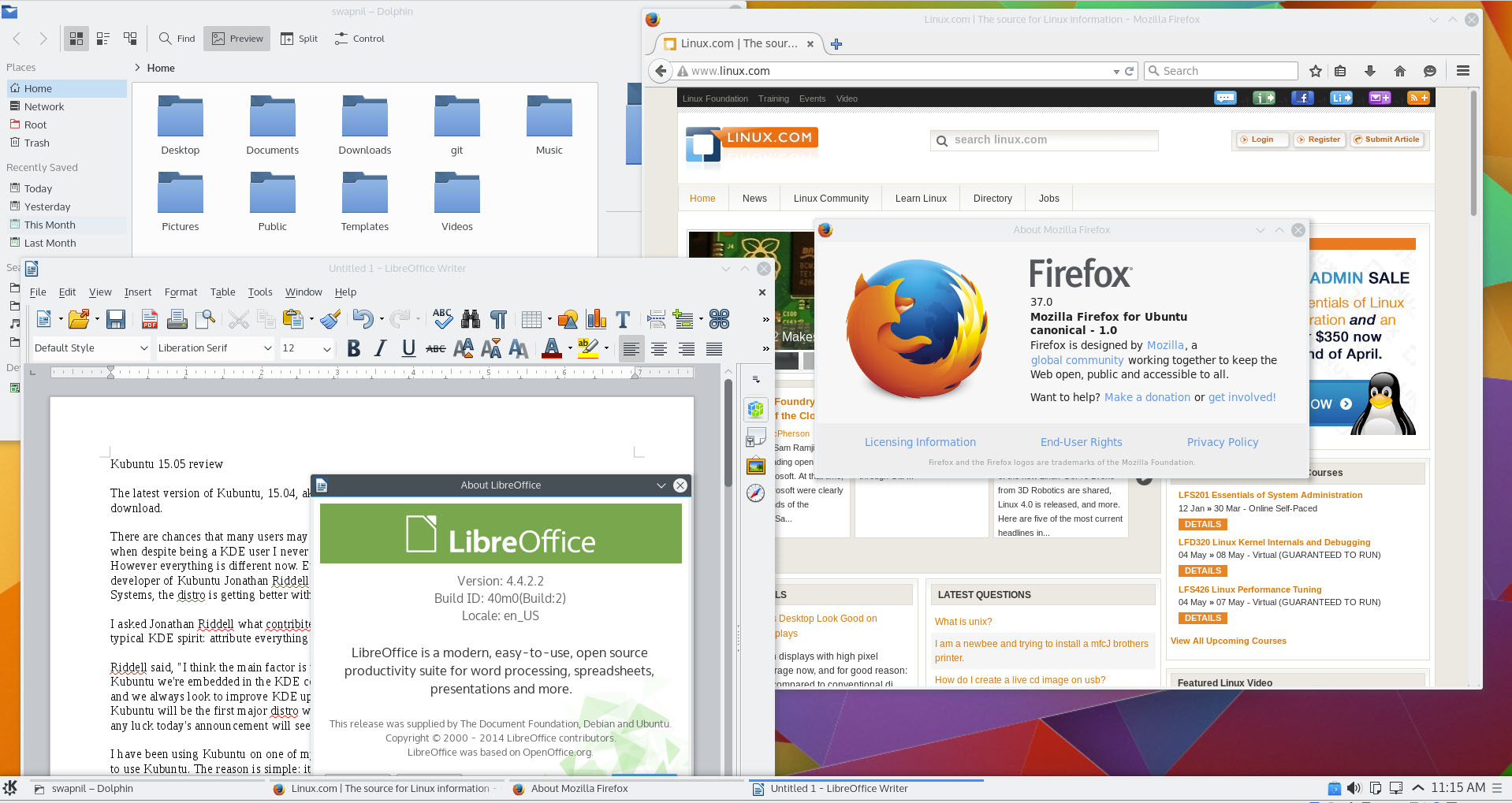
These pre-installed applications should be enough for a user to get started with their work, however one can always install the desired applications or packages from the official repositories. Third party apps like Chrome or Dropbox, which are not available through the official repos, can be downloaded and installed from the respective sites of the developer. That’s not all. There are PPAs, aka Personal Package Archives, which enable developers to offer their software to Ubuntu users with greater ease.
In my case, I am pretty satisfied with what comes pre-installed on Kubuntu. There are certain apps that I prefer over the KDE apps, so I always end up installing Thunderbird, Chrome, Transmission, GIMP, Krita, Liferea, DigiKam and Darktable.
Working with the 3rd party hardware
Gone are the days when Linux users had to struggle with new hardware. Thanks to the work done by developers like Greg KH, Linux has a great device driver support. Most of the devices work out of the box. The problem one may face with a device would be due to the limitation of that particular DE or the user-space.
I use Apple’s wireless Trackpad and keyboard. While setting up the keyboard was easy, doing the same with the ‘Magic’ Trackpad turned out to be tricky. For some reason, KDE’s Bluedevil Wizard wanted me to enter a PIN from the trackpad in order to connect the device. I have no idea how to enter numbers from a trackpad. After asking around on Google+, I was told that I must configure “0000” as the default pin in the wizard and then try to connect. It worked. But it also exposed the weaknesses of KDE Software: at times it could be way too complicated to perform a simple task. It’s much easier to connect such devices on the Gnome desktop.
I have not faced any issues with my hardware on Kubuntu 15.04. The driver manager automatically detected my Nvidia card and I installed the latest stable driver recommended by the driver manager.
Swimming with Dolphin
One of the gems of the KDE Software is its file manager Dolphin. In my opinion and experience, Dolphin is the best file manager across operating systems, not just among the Linux distros; it beats the file managers of Mac OS X and Windows. It’s extremely feature-rich and allows a user to perform tasks that even a Gnome user can’t do. The functionality of Dolphin can be expanded by installing new services.
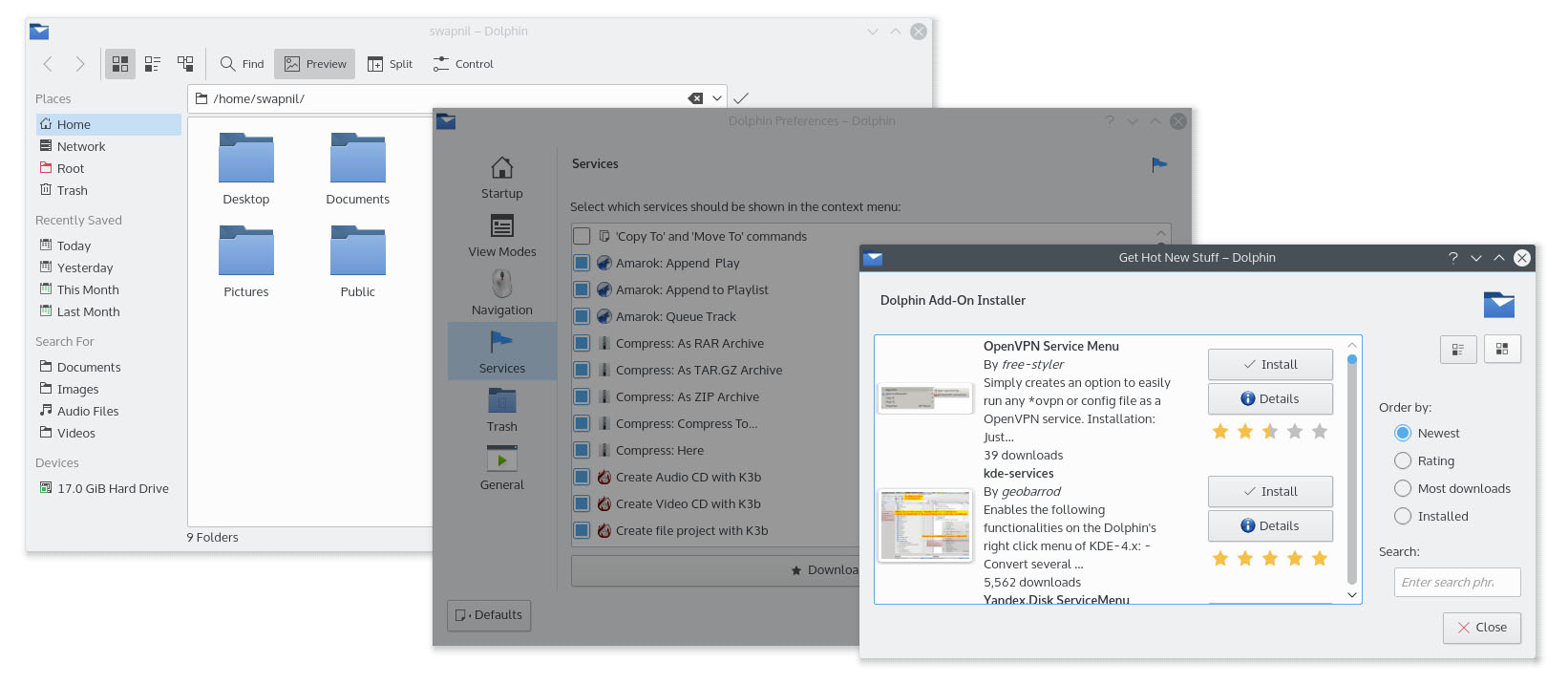
Look and feel
Kubuntu 15.04 is undoubtedly the best Plasma 5 desktop so far, for the simple fact that this is the first distro to ship with it. Since Kubuntu offers a vanilla Plasma experience, you can enjoy what KDE developers originally developed without it being heavily patched or modified. Well, modification can be good in some cases where a particular may not gel very well with the distro.
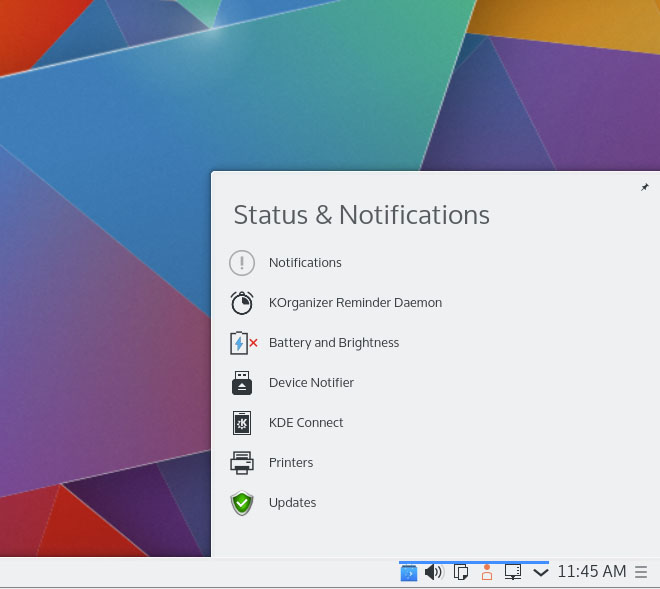
Kubuntu is using the default Plasma 5 themes and icons which is being developed by Nitrux S.A.. The overall atmosphere on Plasma 5, thanks to the desktop theme and icons, is extremely elegant, minimalistic and modern.
However, I do feel that the default theme for windows decoration is a bit of a distraction due to the dark windows. I wish they used some light-colored theme.
Notifications
Plasma does a much better job at handling notifications compared to Unity or Gnome. In Plasma you can actually take an action on a notification or at least dismiss it. Gnome has started to improve it with version 3.16 where users can now act on such notifications. However I feel the notification system on Linux desktop is still behind the one seen on Mac OS X or Android. I wish I was able to open, delete it or reply to a mail right from the notification pop-up.
Dude where are my activities?
Activities have been a blessing and curse for Plasma users. It’s one of the most useful, yet the least used or understood, KDE technologies. I love Activities because they take the virtual desktop experience to the next level. We talked about ‘Activities’ in this article, but I doubt anyone uses it. It looks like KDE developers are burying them down with the latest release of Plasma. Earlier there used to be an Activities icon on the panel which also used to make users wonder ‘ what the hell is this?’. With this release there is no activity icon on the panel. However power users can enable ‘Activities’ from ‘Widgets’.
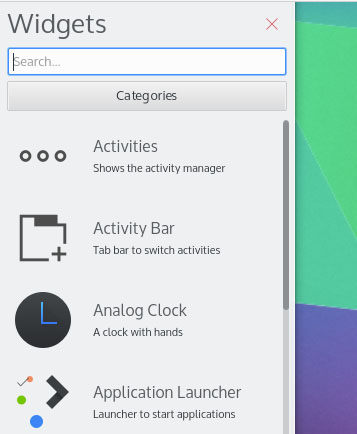
Performance
In general Plasma is extremely fast and responsive. Ever since they dropped Nepomuk and implemented Baloo for search it has become even faster. I am running Kubuntu on a modest (which means old) laptop and Plasma 5 with Kubuntu 15.04 is playing really nice with the hardware. The entire desktop feels much faster and responsive even on this hardware, which can’t handle Unity very well.
Should you upgrade?
It’s quite easy. If you are running Kubuntu 14.04 and want a long term support then you should stick to 14.04. However if you are running Kubuntu 14.10 then 15.04 is an obvious, natural evolution. Since Kubuntu 14.10 is supported only for 9 months you must upgrade to 15.04 without any doubt.
If you are tempted to test Plasma 5.3, since the beta is out there is a word of caution from Riddell. It’s still in the early stage of development and things might break. Riddell told me, “Plasma 5.3 isn’t well tested. Of course we’re the first major distro to release with Plasma 5.2 so that’s a whole new level of testing in itself. So stick with Plasma 5.2 if you want stability unless there’s some problem you know is fixed in 5.3 in which case go with that.”
But you won’t be locked out of 5.3 for the 15.04 release. Riddell said, “I made the tars available to packages this morning and once the Kubuntu release is done I’ll start packaging Plasma 5.3 for Kubuntu 15.04.” Plasma 5.3 will arrive to Kubuntu 15.04 sooner or later and it will be safer to upgrade to it when it’s pushed by the Kubuntu developers.
Conclusion
In a nutshell, I found Kubuntu 15.04 to move consistently on the path of improvement, getting better with each release. If you are hesitant about Kubuntu due to a previous release, let me tell you that a lot of water has flowed under the bridge since. It’s a totally different Kubuntu.
Try it out and you will be surprised with what you have been missing until now.


